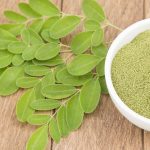It is saddened to learn that there is no one best way to achieve arthritis pain relief. What it means is that for arthritis sufferers, they will need to adjust themselves by adding this and dropping that as their condition change. According to medical research, there is no single technique that can always produce the same or consistent results in pain relief.
In that case, I believe we should always weigh between medications and surgery and regard managing arthritis pain as a continuing journey. If so, learning the various options available to you is important as that will allow you to plan the next best course of action available.
I have compiled some of the options available and wish it can be of help to you in managing your arthritis pain that hinders your mobility.
Option 1 – Learn all you can about your arthritis pain
This is to inform that patient education is very important in your arthritis pain management (this has been confirmed by American Pain Society). As the saying says, your knowledge about your arthritis is very important to help you break down the road blocks to pain relief since there exists a lot of preconceived notions and misconceptions that may make you go nowhere in your journey to have a better life.
 Option 2 – Rehabilitating the body
Option 2 – Rehabilitating the body
This basically refers to proper posture, regular exercise and finding the solutions that make you perform your daily activities such as bathing, writing, driving, etc less problematic. Don’t underestimate the importance of proper posture as studies showed that simple action such as jutting the abdomen forward can cause lower back pain while compromising the sore knee can result in pain in hip or ankle.
Never give up on exercise just because of your pain, getting regular exercise can strengthen the joint-supporting structures, improved their flexibility as well as pumping blood and bringing the needed oxygen for healthy joints. It is said that losing 10 pounds of body weight takes 30 to 50 pounds of the pressure off the knee. I suggest that you get help from physical therapists to guide you on how to perform a full range of health improving motion exercises.
Option 3 – Help yourself at home
If you are at home, instead of thinking about to get rid of the pain through medication, you may focus on doing something that make you stay warm, get cool or have a good rest which are proven to help decrease inflammation, relax tight muscles and help in eliminating waste products such as lactic acid that cause stiffness and soreness.
A hot bath or dip in a Jacuzzi can usually bring immediate pain relief, however, if you have medical issues (i.e. respiratory, cardiac, etc) that prevent you from using warm water therapy, it is advisable to check with your doctor before plunging in. Also, the popular electric heating pad can be good for pain relief in an isolated part of the body.
Cold therapy that involves cold packs, ice packs, ice massage, cold compression wraps or fluids that cool the skin as they evaporate can be equally effective by working to decrease the blood flow to reduce swelling and in slowing the transmission of pain signals through nerves thus inhibiting inflammatory chemicals.
It is also proven that alternating yourself to soak in hot and cold water can decrease swelling and pain. It may be as simple as leaving your hands or feet in the warm water for five to 10 minutes then plunge them in the cold for another minute and to repeat the process for a few times to reduce the pain.
Option 4 – Consult non-physicians
Studies have shown that the following non-prescription methods can be of great help, however, you should always check with and tell your doctor about the methods that you are using.
Acupuncture. Based on studies conducted, acupuncture is good for knee osteoarthritis who had moderate to severe pain although the benefit may not be significant at the beginning.
Massage. Massage is popular because it can provide temporary pain relief by working to bind a loose joint and loosen a hard joint.
Ultrasound. It may be useful for relieving pain and inflammation caused by injuries to the soft tissue, muscle spasms and arthritis in a specific location in our body such as the hand. Ultrasound treatments are performed by physical or occupational therapists and it works by using sound waves to penetrate the tissues and provide heat.
Option 5 – Calm the mind to calm the body
According to the American Pain Society, getting better sleep, easing pain and reducing emotional distress are important in pain management. Psychological well-being will help in reducing pain and improve our ability to cope and to improve health to enjoy life. The psychotherapy techniques that are said can help in arthritis pain included Hypnosis, Biofeedback and Cognitive Behavioral technique.
I sincerely hope the above can provide you with some ideas to help you find your best mix of techniques in reducing your arthritis pain and in your journey to better joints health.
Best,
Tan Kok Hui
Nutrition Made Simple, Life Made Rich








You should consult that with a qualified physician. It does not mean it is the best way, but a proper way for you to get the needed advice and to better equip yourself for what to do next.
In your first tip, you mentioned that it is a good idea to learn about your arthritis pain. Is the best way to do that to consult with a physician?
I have a large amount of joint pain in my knees and hands and doing anything I can to help that pain is definitely on top of my priority list. I assume that doing research about joint pain would be beneficial as well.
The New England Journal of Medicine, believes if awareness starts young then obese children can lose weight before adulthood and minimize their chances for the disease-risks of adulthood obesity.
In bigger cities, walking may be the only choice you have as a downtown resident. These conditions would greatly affect your decision to want a reversal for your original vasectomy procedure. If you do so, you will have a flat belly in no time.